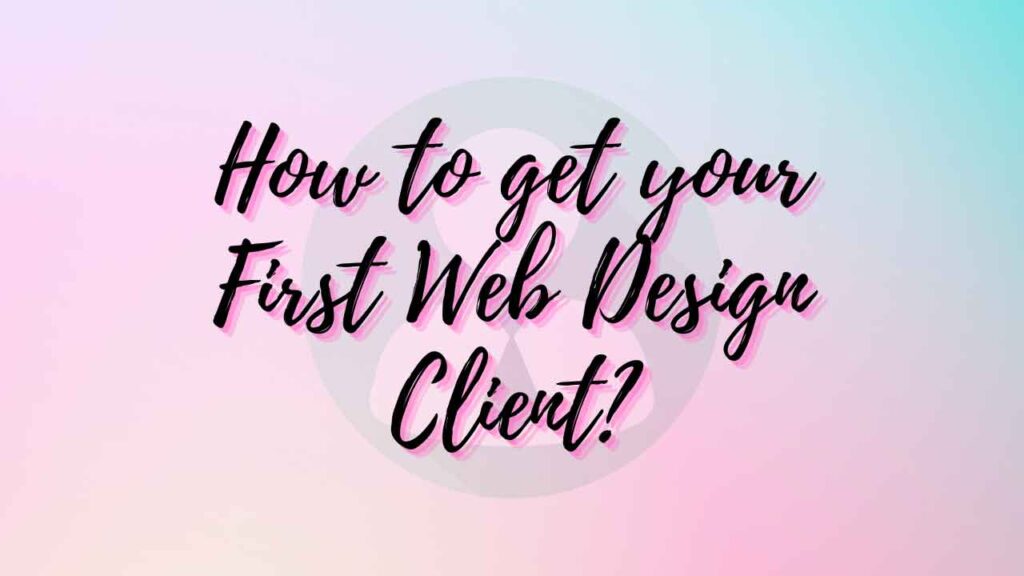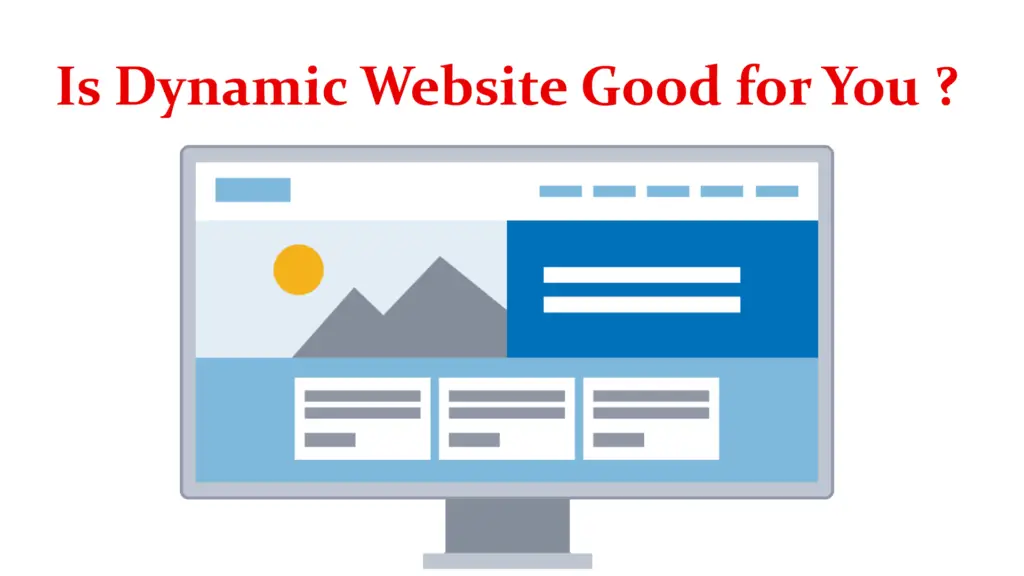THIS ARTICLE MAY CONTAIN AFFILIATE MARKETING LINKS! IN CASE YOU MAKE A PURCHASE THROUGH ONE OF THE LINKS, WE'LL GET A SMALL COMMISSION. WITH NO EXTRA CHARGES TO YOU. THANKS!!
Getting your first client is hard and we are here to help. Learning how to attract customers is not easy, but by applying these 7 steps you will have a basis to get a business system that is profitable and allows you to start your career. The tips provided in this article on how to get your first web design client are definitely gonna help you get your first client and if you are not getting enough clients then it is a must.
Table of Contents
How to get your First Web Design Client?
Portfolio
Far from what some marketing gurus may tell you that they don’t have a portfolio or have it hidden there, the portfolio is that element, along with testimonials or reviews, where you show everything you promise with your services, is fulfilled. The objective of a portfolio is to have an idea in a visual sweep, of the type of services, solutions, means used, and quality of the designs. When we are starting to make ourselves known, it is more than normal to have a generalist portfolio and chaos, we also started like that. But, are you familiar with the phrase, “better done than perfect”?
The important thing is to start, you will have time to improve. It is super easy to have a portfolio on WordPress that you could update comfortably. This way, you allow clients to know what you know how to do and for what kind of profiles, all within your own website, comfortably and without other stimuli that distract them, unlike social networks.
Budgets
When it comes to giving information to a client about the service we can offer to solve their communication problem, it usually drives us crazy to know how to present the information, what to put and how to deliver it to the client.
Here are some great tips to create quotes with a good acceptance rate:
- Define your service in advance, openly, if possible on your corporate website or in a PDF file linked to your social networks. This will allow your customers to know in advance what is included, a base price, and allows you to filter customers who may be your target audience.
- Prioritize a digital format, for on-screen viewing. This will allow you to present the information in a more comfortable and visual way, instead of with formats with a lot of text and everything very condensed, designed for printing. In addition, an interactive PDF form will allow you to include links and buttons and generate a more complete chain of information, linking to your website, your portfolio, client testimonials, etc.
- Include a detailed description of your service and what it includes with the price and taxes indicated separately.
- Indicate the personal or billing information of both parties and the dates that will condition the project:
– date of issuance of the quotation
– validity date of the quotation
– and of availability in your agenda to start the project.
Of course, indicate the conditions of your services. A client should ALWAYS know the conditions before accepting and paying for your services.
Specialization
If there is one word that I think I have been repeating the most over the years, it is this one: specialization. Normally we all go out to the market thinking that the more things we do, the more likely we are to attract clients…
This thinking only leads us to be what is called “Swiss Army Knives”. In the end, this only leads you to compete on price while what interests you to grow is to compete on VALUE, which is very different. To grow you will need clients to associate you with the fact that you will be a very good option to make the design they need and that can only be achieved by perfecting your work, increasing your knowledge, and having more and more experience by repeating the same type of projects and to cover the same type of needs… And that is what specialization gives you, aiming at the target and start climbing, but not wanting to be “on all the stairs climbing” at the same time, at the same time, and pretending to grow like that, don’t you think?
Briefing
The briefing is an essential element for your workflow and for you to be able to work on projects that are a success and that are the best ambassadors of your work, to continue attracting new clients.
A briefing is a document that gathers all the information that conditions how a design should be and what objectives it should meet. In this article, I will give you more details in depth, but broadly speaking you have to take into account the following indications.
It involves a whole process of data collection, research, analysis, and specification of objectives that are used to establish all the data that must be taken into account to make decisions that solve a specific communication problem through a design and that takes the form of a written document: the project briefing itself.
These are some key points from which you should obtain information from the client.
1. Include the company’s data and activity.
2. The target audience
3. What services or products are offered
4. What is the problem to be solved by the design?
5. What reaction or action is the design intended to achieve?
6. The communicative and visual objectives of the design.
7. The conditions of the service: budget, time, design delivery, etc.
It is a vital activity to collect and filter all the information correctly, to get the client involved, and to ensure that the design responds as well as possible to the client’s real needs.
- Highest paying freelancing jobs
- What are the highest paying design Jobs?
- What makes a Website Design Good?
Testimonials
Collecting client testimonials is vital, as I mentioned in relation to the portfolio, it is one of the parts that serve as an “endorsement” of the quality of your work and demonstration that your projects and clients are real. For example, you can check the ones from my Branding studio here.
Over time I have realized that it is a task that can be a “ball”, especially at the beginning when we are more “novatillos” but getting clients to leave you a public testimony about their experience working with you, is very important to grow, to take care of your “authority” as a graphic design professional and also to demonstrate transparency. Yes, transparency.
There is nothing worse than having comments on a website where you can’t check where they come from or if those clients are real. So, here are some tips to get them ☺️
1. The most important thing is that you give a good service and take care of every customer (obviously) 2.
2. Enable some system to collect them in a “public” way, in my case I have both the Google My Business listing and the Facebook page. This allows you to “put a face” to them and know that these testimonials are real.
3. After performing your service, make an invitation in a natural and not forced way. For example, I ask them like this: “Thank you so much for trusting my work! I would love to know what your experience has been like during this whole process, could you stop by [LINK] and tell me about your experience with my Branding service? Thank you!”
Hopefully, this tip will help you and you’ll incorporate the request for testimonials into your work system! You will be surprised by the number of wonderful clients you will meet and the number of nice things they will say about your work, and that “fuel” for your motivation is priceless!
Contents
At this point, the lesson is very simple: YOUR CLIENT IS NOT BORN KNOWING WHAT GRAPHIC DESIGN IS FOR. It is our job as creatives to divulge and also to show the work processes, the purpose of the services, the role in communication and on the Internet, and the interaction with the information… there is so much to do! Brandéame is changing for the same reason, it started as my own idea as a hobby, then to spread the word about design for my clients, and today the focus is to help other designers and I share the content and dissemination with my own brand of my studio, LLLU, for example, in resources such as a free ebook on Branding that I created for my clients.
Whatever your specialty, explain:
– who you are
– what you bring to the table
– what you know
– what your work solves
– what is the purpose of your business
– what advantages do your clients get
Give information and visualize your work. Don’t just focus on the portfolio to show what you know how to design, but try to create content to offer everything you know behind the final results and the mockups of your portfolio. In a blog, on YouTube, on Instagram, wherever you feel more comfortable, but SHOW AND DEMONSTRATE.
WordPress website
To take off with your business as a graphic designer you not only need to showcase your portfolio or your services, but you need your “digital home” of your business where you let clients know everything you can provide, your website should always be the last stop of your entire social media strategy, the meeting point of all your content and what also allows you to appear in search engines when a client needs your services.
❗️Having an Instagram account is NOT ENOUGH.
❗️Having a portfolio on Behance is NOT ENOUGH.
❗️And having a PDF dossier of your services is NOT ENOUGH.
You need your “home” where you can generate a whole system of information, content, and recruitment tools that will allow you to have 24/7/365 advertising and also position yourself in Google.
WordPress is a free and open-source content management system with a large community of developers working on improvements to the platform itself, plugins, and templates. It is 100% designed for beginners, so that a person, once you have your website, can manage it independently with ease: generating articles for the blog, uploading and managing products online stores, etc.
You can have a website with which to start your business in a very simple way and there is a lot of content, courses, and information constantly with which you can improve it every time. When you grow and need something more advanced, you can work with web designers and developers but for the beginnings, which I know are hard, it is a great option to generate your “digital home” by yourself.
And so far these first 7 steps, I hope you find all these tips useful! Apply them “little by little” and you will see how you will get clients and good projects and build your image as a professional in the graphic design sector and grow your business.
And, as always, if you have any questions that we can solve, we’ll be happy to help you.







